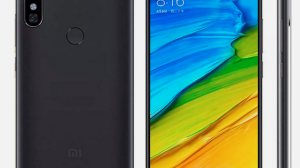Last Updated on September 20, 2024 by Mathew Diekhake
 When you want to start installing custom ROMs or unsigned zip files of any description, such as those you might find with SuperSU and other rooting file alternatives, you won’t be able to achieve it from the stock recovery partition. Instead, you’ll need to wipe the stock recovery with a custom recovery, since you can only ever have one of them at any given time.
When you want to start installing custom ROMs or unsigned zip files of any description, such as those you might find with SuperSU and other rooting file alternatives, you won’t be able to achieve it from the stock recovery partition. Instead, you’ll need to wipe the stock recovery with a custom recovery, since you can only ever have one of them at any given time.
Those searching for what custom recovery to install should look for a version of TWRP. There have been other custom recovery images in the past, and many of those download links are still live as of today, but they are no longer in development. Anything that isn’t being developed could have compatibility issues with ROMs and rooting files that have recently been released.
So what made TWRP take the reins in the world of custom recovery images and why isn’t there any competition? The original custom recovery image people installed was ClockworkMod. It relied on using the Volume keys and the Power button for functionality—those were the buttons one would need to press in order to navigate within the recovery and confirm the actions. TWRP doesn’t do that, instead managing to make use of the touch display that all mobile devices have, allowing for navigation with finger tapping much the same way people were already doing when using the Android operating system outside of the recovery partition. In other words, TWRP came up with something that people were more familiar with and preferred doing . . . it was just the better custom recovery image.
TWRP is an open source custom recovery, and it takes a large number of people’s constant efforts to continue it’s development, all of whom are able to do that working as a team, thanks to its open source environment. ClockworkMod was only being developed by its founder, Koushik Dutta. Thus, it was difficult for ClockworkMod to compete with so many minds and hands. It isn’t out of the question that another custom recovery image comes along and takes TWRP’s place. But there isn’t any features that TWRP is lacking, and since all those developers who wanted to contribute to a custom recovery already are, it’s not difficult to see why TWRP would stop being the world’s preferred custom recovery anytime soon.
Details of Note
- The custom recovery images available in this guide are only to be installed on the Xiaomi Redmi Note 5A or Xiaomi Redmi Y1 smartphones. Most devices have a custom recovery image developed specifically for it, and you shouldn’t install one that is intended for another device unless advised it is okay by a professional.
Files Required
- Download on your computer the latest version of TWRP Recovery: Primary (Americas) | Primary (Europe).
- Download on your computer the platform-tools from the Android SDK.
How to Install TWRP Custom Recovery on Xiaomi Redmi Note 5A or Xiaomi Redmi Y1
1. Make sure you’ve installed the universal ADB drivers on the computer.
2. You need to have the platform-tools part of the Android SDK on your computer. From the download link scroll down until you get to the command line tools section and then download the package that is made for your operating system.
3. Once you have the SDK Manager on your computer, check the box only for the platform-tools, so you end up with the adb and fastboot binaries installed on the computer. (You could also install the drivers from there as well if you wanted.)
4. Pick up the Xiaomi Redmi Note 5A/Xiaomi Redmi Y1 smartphones and navigate to the Settings > About and tap your finger over the build number at least seven times so that the Developer Options menu becomes unlocked. Then go back to the Settings, enter the Developer Options menu and then enable the USB debugging mode.
5. Connect the Xiaomi Redmi Note 5A/Xiaomi Redmi Y1 smartphones to the computer by using the USB cable that it comes with.
6. Now on the computer open the Command Prompt and type the adb reboot bootloader command and hit “Enter” on your keyboard to get the Xiaomi Redmi Note 5A/Xiaomi Redmi Y1 smartphones into the bootloader mode and ready for the flashing.
7. Make sure you have copied the TWRP image file to the same folder as the adb and fastboot binaries. Also when you’re there, change the name of the TWRP to “twrp.img” by right-clicking the mouse pointer on it and selecting the “Rename” option from the menu.
8. From the command line type the fastboot flash recovery twrp.imgcommand and hit “Enter” on your keyboard to flash the custom recovery.
9. Lastly type the fastboot reboot command and as soon as the Motorola Moto G5 Plus smartphone reboots, hold down the key combination to boot directly into the recovery mode. (If you don’t sometimes the stock recovery will wipe over the custom recovery you just installed.)
The custom recovery image for the Xiaomi Redmi Note 5A/Xiaomi Redmi Y1 smartphones is now installed, and you are ready to boot into recovery mode and start flashing the custom ROM or rooting zip files.
